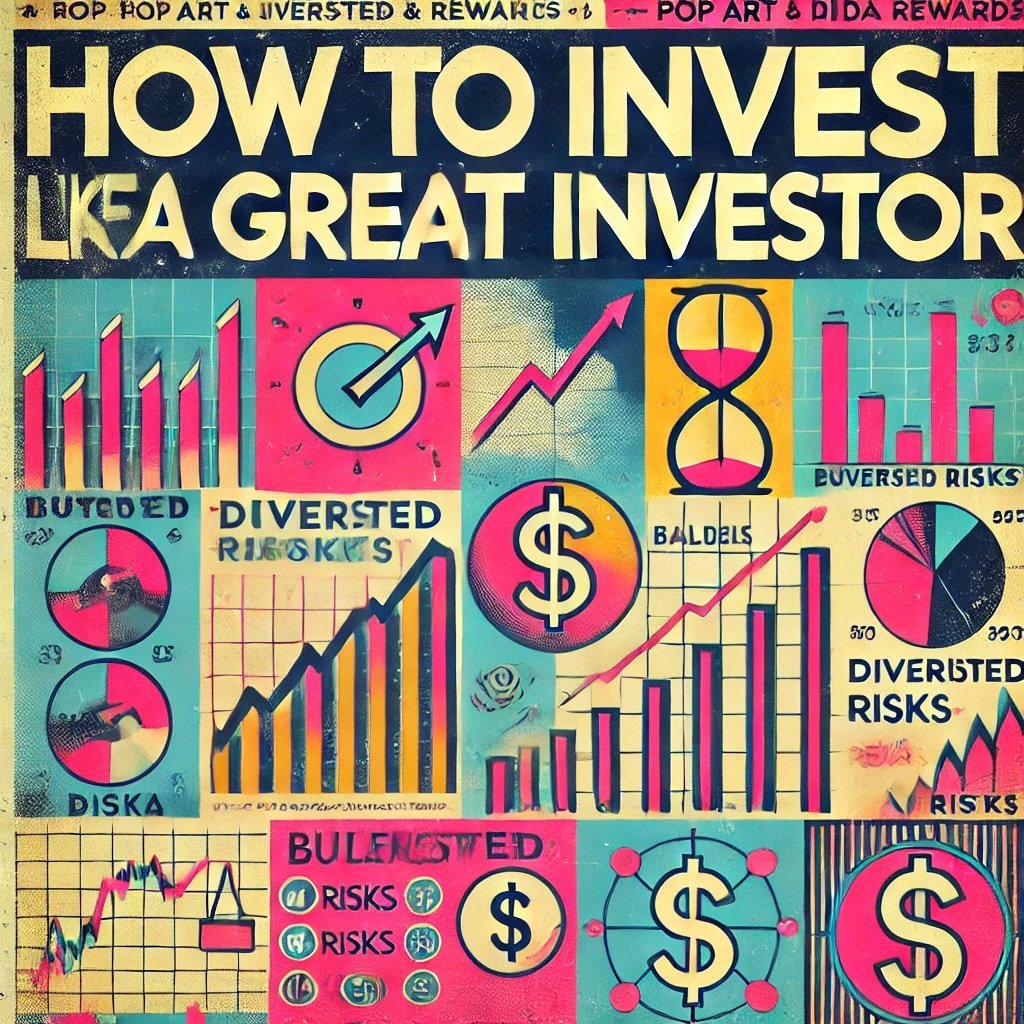Inflation. The word itself can stir up anxiety among savers, investors, and business owners. It signals a rise in the general price of goods and services over time, which means every dollar you hold loses a little bit of its purchasing power every day. When inflation starts creeping upward—whether due to excessive money supply, supply chain constraints, or macroeconomic imbalances—it can threaten not only the value of your wallet but also your long-term financial stability.

Yet, there is reason for calm. If you’re seeking guidance on how to protect your wealth against inflation’s bite, Warren Buffett offers a treasury of insights. Born in 1930, Buffett has witnessed and invested through numerous economic environments, including some high-inflation eras such as the 1970s. Through it all, he has maintained a steadfast approach that manages to keep his capital—and that of Berkshire Hathaway—growing steadily over time.
Why focus on Warren Buffett? Because he’s arguably one of the most successful investors in history, with a net worth in the tens of billions of dollars and an investing track record spanning decades. More importantly, Buffett’s strategies are not cloaked in inaccessible, complex theories. They are built around straightforward principles such as buying strong businesses, seeking out sustainable competitive advantages, and thinking long-term. These principles, if applied prudently, can help anyone shield themselves against inflationary pressures.
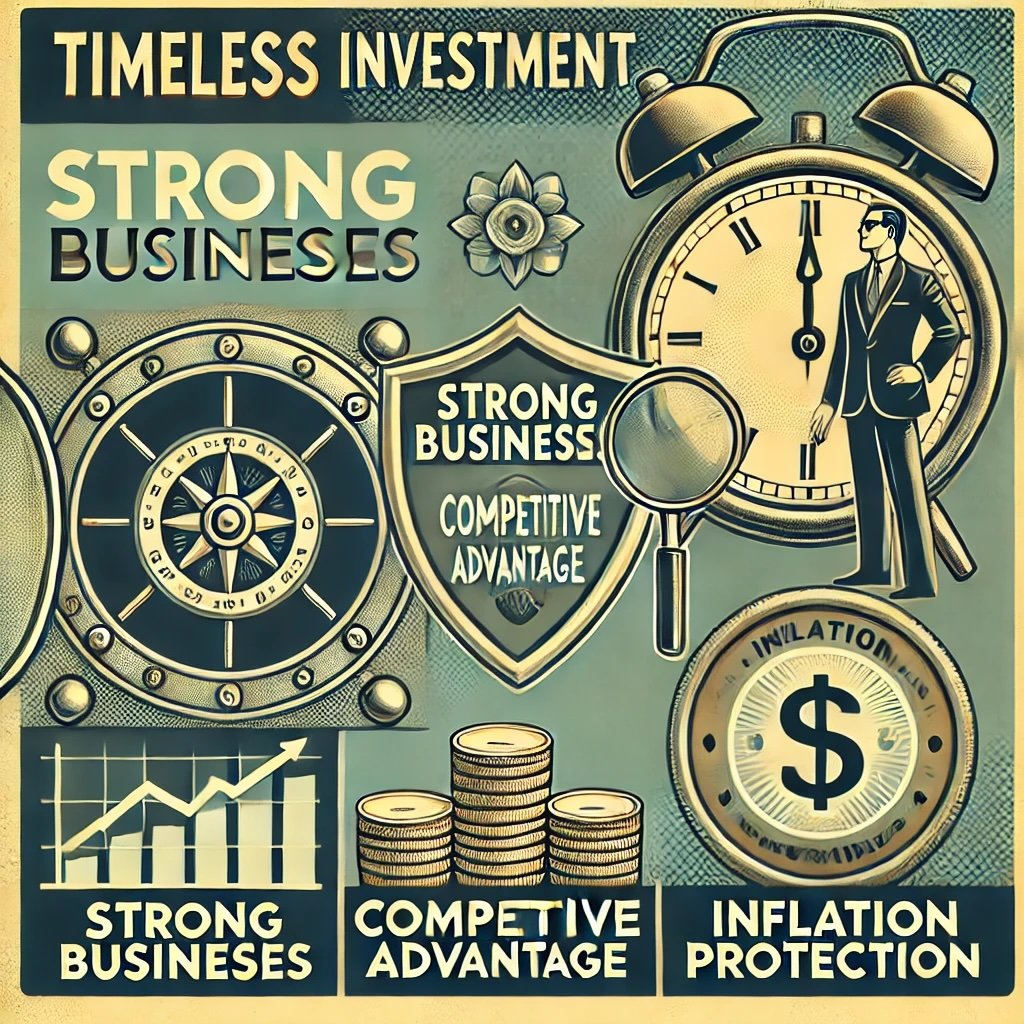
We’ll spend this blog post digging into how Buffett perceives inflation, why he’s so wary of certain asset classes in inflationary environments, and how he positions himself—or rather his capital—to withstand (and sometimes even benefit from) rising prices. But before we get into specifics, let’s define what we mean by “inflation-proof” investing. Strictly speaking, no investment can guarantee complete immunity from inflation. However, certain assets and strategies have historically done much better than others when inflation ticks up. Buffett’s approach zeroes in on such assets, backing them with a philosophy rooted in consistent earnings, pricing power, and fiscal responsibility.
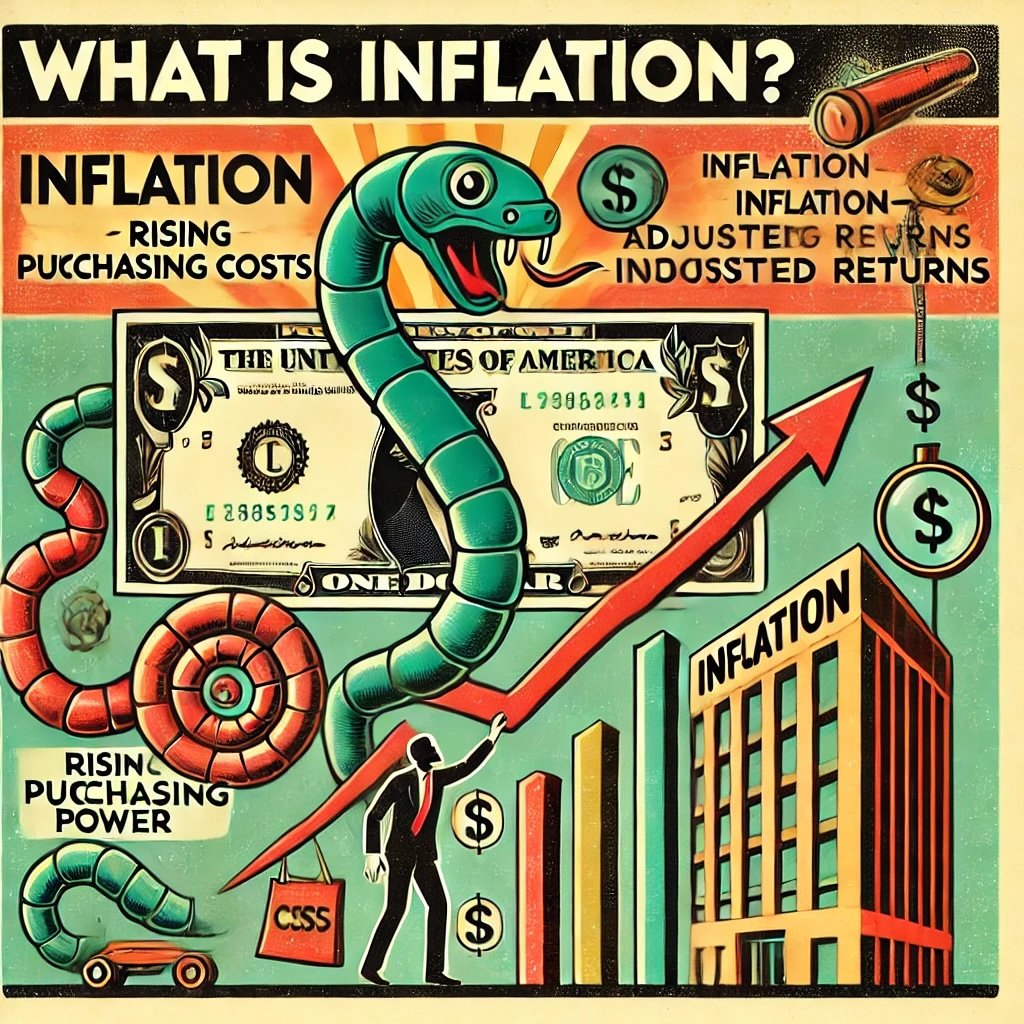
Understanding Inflation Through Warren Buffett’s Lens
What Is Inflation?
Inflation is, at its core, the gradual reduction in the purchasing power of money over time. When inflation occurs, each unit of currency buys fewer goods and services than it did previously. This can happen for various reasons: an increase in the money supply, higher production costs, or even demand-pull factors where consumer demand outstrips supply. Whatever its origin, inflation means that as each year passes, your dollar doesn’t stretch as far as it once did.
Warren Buffett has a knack for memorable imagery. He famously likened inflation to a “gigantic corporate tapeworm,” implying that inflation stealthily eats away at a company’s capital. In other words, companies facing rising input costs—from wages to raw materials—must constantly pour profits back into their businesses just to stand still. For individual investors, this translates into a pressing need to generate returns that exceed the inflation rate, or risk seeing real (inflation-adjusted) returns vanish.
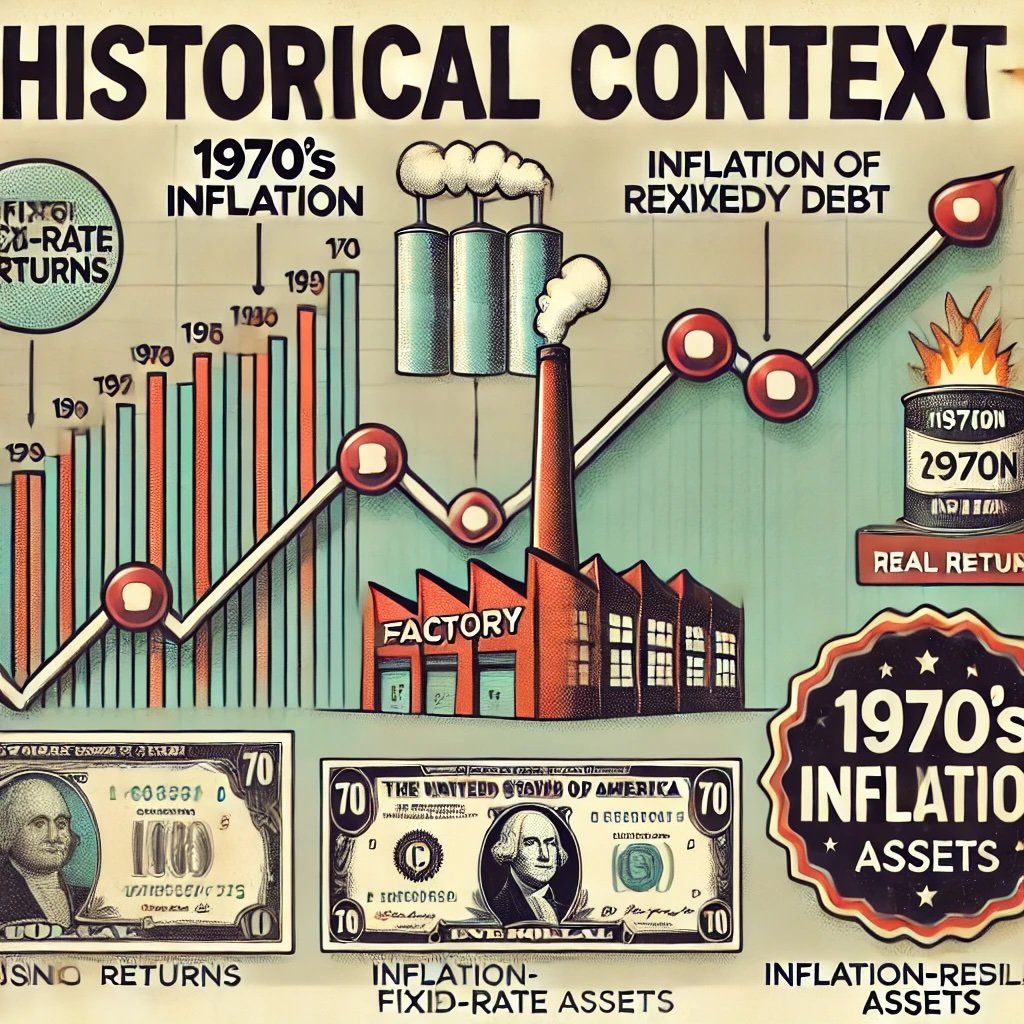
Historical Context
One of the more intense inflationary bouts in U.S. history happened during the 1970s, culminating in double-digit inflation rates. Buffett, who was already an accomplished investor by then, observed how inflation eroded the value of both corporate profits and individual savings. Many businesses saw their nominal earnings rise but failed to outpace inflation. For Buffett, this era underscored the importance of focusing on real returns—returns after accounting for inflation—and taught him which types of companies could handle rising costs without losing ground.
Additionally, Buffett learned that certain asset classes, particularly long-term government bonds, could be risky during high inflation. Bonds pay fixed interest, and if the inflation rate surpasses that interest, investors end up losing purchasing power. The 1970s thus provided Buffett with a clear demonstration: heavily leveraged companies and fixed-rate debt instruments tend to struggle mightily when the cost of capital climbs.
Buffett’s Core Philosophy on Inflation
Buffett often remarks that the best protection against inflation is to improve your own earning power—your personal skill set and ability to command higher wages or revenues. But on the investment side, his focus boils down to owning high-quality businesses. By “high-quality,” he means enterprises that can adjust prices upward without alienating customers, use their capital efficiently, and generate enough free cash flow to handle inflationary headwinds.
Moreover, Buffett’s take on inflation goes hand in hand with his long-term holding strategy. Instead of jumping in and out of the market based on inflation reports, he’d rather identify companies that can thrive under a range of economic conditions, inflationary or otherwise. This approach stands in contrast to short-term speculation, which can spiral into panic selling during inflationary scares. Buffett’s calm resolve stems from his conviction that well-chosen businesses can ride out price hikes better than poorly chosen ones, especially if they possess strong competitive advantages.
He also underscores the difference between nominal returns and real returns. Nominal returns may look decent in inflationary times—for instance, a company’s earnings might double in a period of high inflation—but if the overall price level doubles too, there’s no real gain. As an investor, Buffett sets his sights on genuine value creation: growth in the company’s intrinsic worth outpacing inflation.
Why Inflation Matters Today
Although inflation rates in the past decade have been relatively moderate (with some exceptions in recent years), global events can quickly trigger a resurgence of inflationary pressures. Central banks might print more money to stimulate economic activity. Supply chain disruptions or geopolitical tensions might drive up commodity prices. In these scenarios, investors need to be prepared.
Buffett’s perspective is especially relevant as governments worldwide grapple with unprecedented levels of debt and potential monetary expansion. Could high inflation return? Possibly—and if it does, Buffett’s game plan, honed over decades, offers a blueprint for protecting your wealth. It encourages a shift away from assets that are likely to be crushed by inflation—like long-duration bonds or cash hoards—and toward assets that can hold or grow their real value.
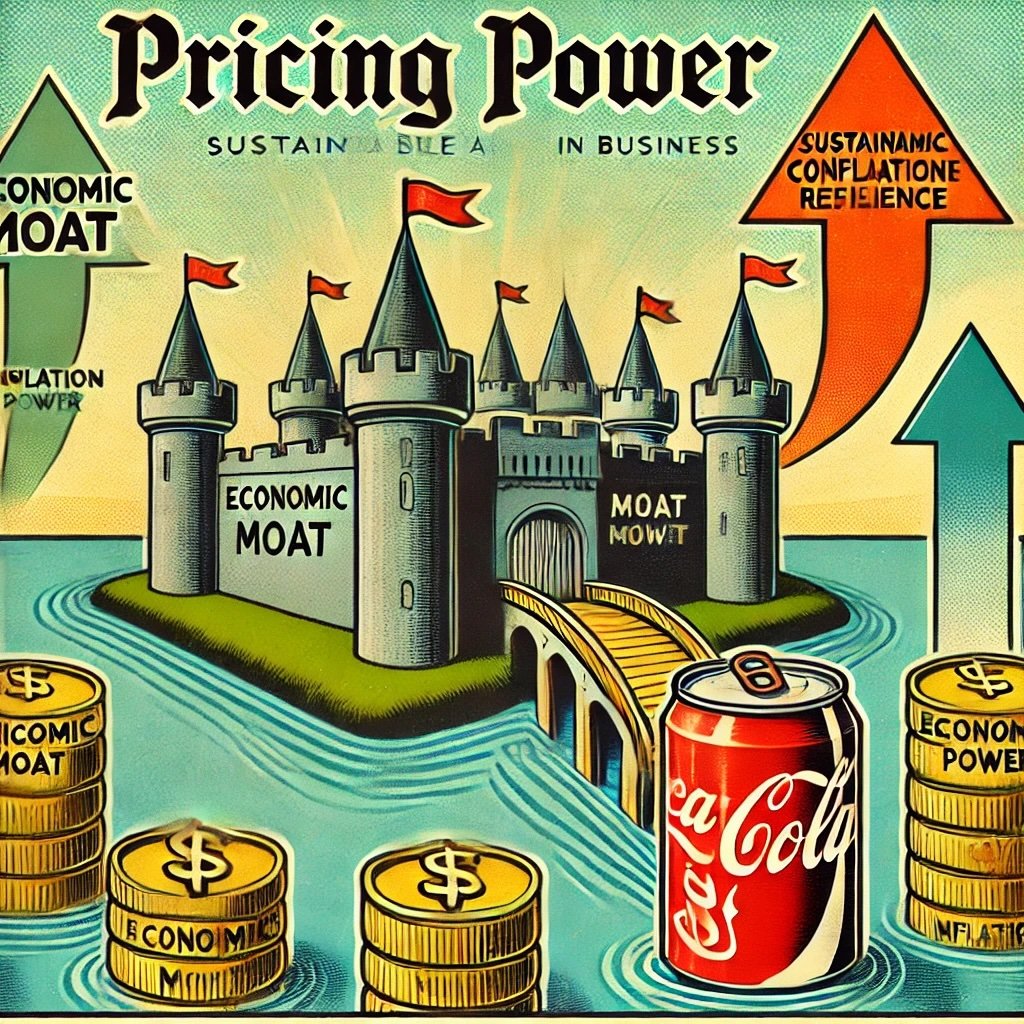
Key Characteristics of Inflation-Proof Investments
Inflation-proof is a strong term. Strictly speaking, no investment is fully insulated from rising prices. Yet, Buffett zeroes in on certain traits that can significantly bolster a company’s resilience. These traits apply broadly to many industries but are particularly pronounced in businesses that Buffett loves—think Coca-Cola, See’s Candies, or even segments of Berkshire Hathaway’s holdings like railroads and insurance.
Pricing Power and Moats
If you’ve followed Buffett even casually, you’ve come across the term “economic moat.” It refers to a sustainable competitive advantage that keeps rivals at bay. This can manifest through brand loyalty, patents, proprietary technology, or networks that are difficult to replicate. In inflationary climates, companies with robust moats can raise prices without losing significant market share.
Buffett frequently points to Coca-Cola as a quintessential example. Even if the cost of sugar or aluminum climbs, Coke can incrementally raise the price of a can of soda, and most consumers won’t ditch the brand for a cheaper knockoff. This capacity to hike prices—sometimes called “pricing power”—is the bedrock of inflation resilience. Companies lacking moats may find themselves unable to pass on higher input costs to customers, thus seeing profit margins shrink.
Low Capital Intensity
Another factor Buffett looks for is low capital intensity. Why? Because companies requiring continual infusions of capital—like cyclical manufacturers or tech hardware firms—are particularly vulnerable to inflation. If every year they need to buy new machinery, upgrade equipment, or invest in costly research, inflation boosts those expenses. That means a large chunk of the company’s earnings gets funneled right back into simply maintaining operations.
In contrast, businesses with low capital requirements can keep more of their earnings. Take See’s Candies, for instance. Once the facilities are set up and the brand is established, the day-to-day cost of production doesn’t require massive new outlays of capital every year. Sure, ingredient costs may rise, but if the brand loyalty is strong, these can be offset by slight price adjustments. Hence, a low-capex, high-margin enterprise is more likely to withstand inflation.
Consistent Demand
Companies producing essential or highly desired goods often fare better in inflationary periods. Think consumer staples like beverages, food items, household goods, or even certain healthcare products. Demand for these items tends to remain stable or even rise, regardless of cost hikes. Buffett invests heavily in consumer staples for precisely this reason. People are likely to keep buying toothpaste, chocolate, or soft drinks even if prices inch upwards.
This logic extends beyond consumer staples, too. Industries like energy and utilities can also exhibit stable demand. While the cost structure might shift, society can’t simply “opt out” of electricity or fuel in the short term. Buffett’s bets on railroads (through Burlington Northern Santa Fe) illustrate this principle. Transportation of goods is essential. Even if the prices for commodities shift, trains still need to run, and that consistent usage translates into steady revenue streams.
Long-Term Profitability and Growth
A company’s ability to grow earnings in real terms—above the inflation rate—is crucial. If inflation is running at 3% and your chosen company can only grow earnings at 2%, you’re effectively losing ground. Buffett wants to see real growth that outstrips the inflation rate. This might come from expanding into new markets, introducing new product lines, or improving operational efficiency. Regardless of how it’s achieved, the end result is that the business’s intrinsic value moves upward faster than inflation erodes it.
But how do you identify such companies? Buffett’s method involves reading reams of annual reports, studying the management team’s track record, evaluating past earnings growth, and comparing it against inflation metrics. It’s a thorough process, but one that consistently yields companies that can thrive under varied economic conditions.
Managerial Excellence
Buffett often praises leaders like Ajit Jain (who runs Berkshire’s reinsurance operations) for their prudent underwriting standards or managers at subsidiaries who handle adversity with level heads. During inflationary times, nimble, farsighted leadership can make strategic choices, such as hedging critical input costs, that protect margins. Conversely, incompetent leadership might panic, overreact, or take on debt that becomes painful to service in a high-inflation environment.
No matter how good a company’s fundamentals might appear on paper, poor management can sabotage it. From Buffett’s perspective, it’s essential to find not only a strong product or service but also a leadership team that aligns with conservative financial policies and long-term thinking.
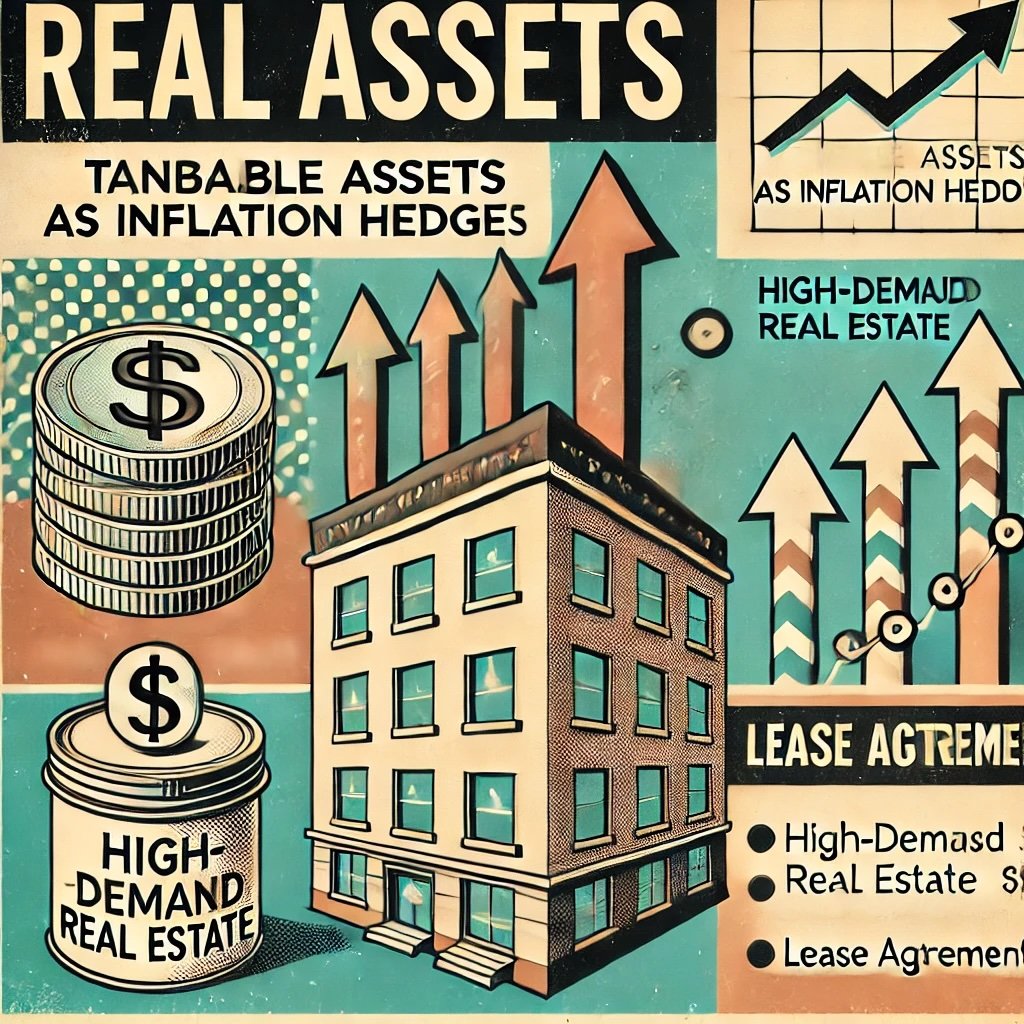
Asset Classes Buffett Favors During Inflation
When inflation ratchets up, investors often scramble for so-called “safe havens.” The usual suspects might include gold, real estate, or exotic commodities. However, Warren Buffett’s track record reveals a different set of preferences—ones rooted in tangible value creation rather than mere speculation. In this section, we’ll examine the primary asset classes Buffett leans on to shield Berkshire Hathaway’s portfolio from the perils of rising prices.
Stocks Over Bonds
Why Buffett Prefers Equities
Bonds, particularly long-term government bonds, provide a fixed interest rate. This arrangement might appear stable, but when inflation surges above that rate, bondholders lose real purchasing power. If you hold a 2% coupon bond and inflation climbs to 4%, you’re effectively underwater. Buffett has repeatedly cautioned that fixed-income investments can be “terrible” during high inflation, as they offer meager returns that fail to keep pace with rising costs.
Equities, by contrast, represent ownership in companies. If a business can pass rising costs to customers (due to strong competitive advantages), its earnings can keep up or even surpass inflation. This possibility positions stocks as a better long-term bet in times of rising prices—provided you pick the right companies. Buffett’s success story rests heavily on selecting such companies, then holding them for years, allowing both earnings and share prices to compound.
Growth vs. Value
While the line between “growth” and “value” stocks can sometimes be blurred, Buffett historically gravitated toward “value” names: companies trading below their intrinsic worth but boasting robust fundamentals. Yet in later years, Berkshire Hathaway’s portfolio included positions in tech-oriented giants like Apple, which might be considered “growth stocks.” The key, for Buffett, lies in paying a reasonable price for future earnings streams, particularly when those earnings can outpace inflation.
Dividend-Paying Stocks
A subset of stocks Buffett holds dear are those paying dividends. Dividends can provide a “paycheck” that you can either reinvest or use to offset inflation-affected expenses. Companies that regularly increase their dividend payouts—sometimes referred to as “dividend aristocrats”—tend to have stable cash flows and strong pricing power. These qualities align perfectly with Buffett’s inflation-resistant criteria.
Real Assets
Tangible vs. Intangible
While Buffett is predominantly an equity investor, he also appreciates the stability of tangible assets—especially those that can generate ongoing income. Real estate, for instance, often sees valuations rise in tandem with inflation. Rents can be raised, and property values might follow inflation upward. If you hold the right kind of property—like apartments in high-demand areas—this can turn into a reliable hedge against inflationary pressures.
Buffett’s Cautious Stance on Gold
Many people consider gold the go-to hedge against inflation. Yet, Buffett remains skeptical of gold because it doesn’t generate cash flow. He once quipped that if you owned all the gold in the world, it wouldn’t produce anything: no interest, no dividends, and no real growth. Gold’s price might spike during times of fear, but Buffett prefers assets that work for you, creating wealth rather than merely storing it.
Farmland and Other Productive Assets
Buffett does admire certain “productive assets,” such as farmland. Farmland produces crops, which can be sold to generate revenue that scales with inflation. Similarly, commercial properties or even energy assets like pipelines can retain value or benefit from price hikes. The consistent theme is that these real assets must do more than just sit idle. They need to churn out cash flows that can be adjusted over time, preferably at or above the rate of inflation.
Strong Brands and Consumer Staples
Names You Know
As mentioned previously, Buffett loves consumer staples like Coca-Cola, Kraft Heinz, and Procter & Gamble. These are classic, everyday goods that people continue purchasing despite inflation. The brand loyalty is so ingrained that minor price increases rarely drive consumers to switch. This loyalty acts as a powerful cushion when raw material or distribution costs climb.
The Moat in Action
Coca-Cola exemplifies pricing power. If the cost of sugar or aluminum goes up, Coke can incrementally raise the price of a can without losing a huge chunk of its customer base. And because the brand is globally recognized, it benefits from scale economies—purchasing raw materials in massive quantities and spreading operating costs over a large revenue base. This synergy between brand power and operational efficiency embodies what Buffett deems an excellent hedge against inflation.
Dividend-Paying Stocks
Why Dividends Matter
Inflation eats away at static returns. Dividend-paying companies, however, often raise their payouts over time, especially if their profits are growing. A rising dividend effectively offsets inflation’s impact by increasing your income in nominal terms. If you reinvest those dividends, you can amplify the compounding effect.
Identifying Reliable Dividend Payers
Buffett’s preference goes to companies with a track record of consistent or growing dividends. These could be banks, utilities, consumer staples, or industrial conglomerates. The hallmark is stability: management teams committed to returning capital to shareholders and a business model robust enough to sustain those payouts through different economic cycles.
Watching Out for Dividend Traps
Not all dividends are created equal. Sometimes, companies with precarious fundamentals offer high yields to lure investors, but they can slash or eliminate those dividends if earnings take a hit. Buffett avoids such traps by diving deep into financial statements, focusing on whether the company’s free cash flow can comfortably cover dividend obligations—even in a down market. This conservative approach ensures that the dividends you rely on to outpace inflation aren’t jeopardized by sudden cuts.
Buffett’s Perspective in a Nutshell
Putting all these pieces together, it’s clear that Buffett’s inflation-proof playbook centers on owning the right businesses with robust fundamentals, primarily through equities. He supplements this with certain tangible, income-generating assets when the economics make sense. Overall, he shuns purely speculative vehicles that lack intrinsic productivity, such as gold or volatile cryptocurrencies, because they don’t produce ongoing cash flows to match or beat inflation.
That said, even Buffett’s strategy isn’t foolproof if the world undergoes extreme scenarios. But short of doomsday, the combination of solid businesses, brand power, low capital intensity, and prudent dividend strategies forms a formidable hedge against rising prices. This is a far cry from the knee-jerk reaction of just stuffing money into gold bars or treasury bonds, which can be less reliable in maintaining real purchasing power over the long run.
Of course, pitfalls still loom. In the next section, we’ll address the common inflation traps many investors—Buffett included—seek to avoid, and we’ll unpack why steering clear of these traps is crucial for safeguarding your capital.
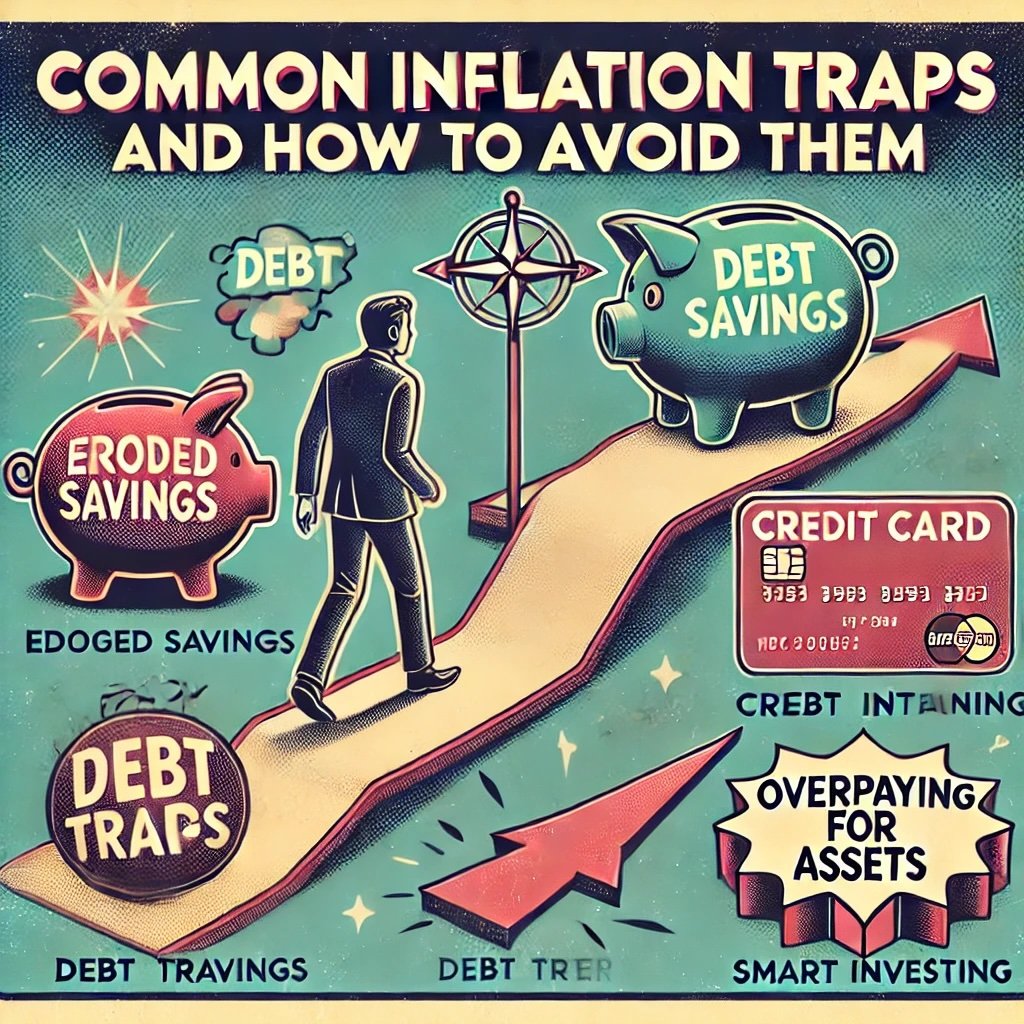
Common Inflation Traps and How Buffett Avoids Them
No matter how carefully you invest, inflation can push you toward certain missteps. Some are born out of fear, others out of greed or misinformation. Warren Buffett, with his decades of experience, has highlighted these traps—both verbally and through his investment decisions. Let’s look at a few and the strategies Buffett employs to sidestep them.
Avoiding Speculative Assets
The Lure of Quick Gains
During inflationary times, investors might seek exotic assets that promise rapid value appreciation. Cryptocurrencies, meme stocks, or commodities futures might appear to rocket in nominal terms. But Buffett warns that speculative frenzies often end in tears. Prices can spike due to hype, not real economic value, leaving latecomers with severe losses when the bubble bursts.
Buffett’s Stance on Crypto
Buffett has famously dismissed cryptocurrencies like Bitcoin, labeling them as non-productive assets. While some see crypto as an inflation hedge, Buffett’s skepticism arises from the fact that crypto doesn’t generate earnings or cash flow; it relies solely on someone else paying more for it later. In an inflationary climate, he’d rather trust a productive business than an asset whose value is entirely market sentiment.
Understanding Opportunity Costs
Money Tied Up in Low-Yield Assets
If you park money in a savings account yielding 1% while inflation is 3%, you’re effectively losing purchasing power each year. Buffett consistently points out that holding too much cash or investing in instruments yielding below the inflation rate is a slow but sure path to wealth erosion.
Watching for Better Allocations
Part of Buffett’s success stems from his relentless pursuit of the best possible use of capital. Whether it’s deploying billions in a new acquisition or holding short-term Treasuries while waiting for a bargain, he’s aware of the opportunity cost. During inflation, opportunity cost takes on heightened importance because every dollar underperforming inflation is slowly eroding.
Avoiding Fixed-Income Investments
Why Bonds Are Risky in High Inflation
Bonds pay a fixed coupon, which loses real value when prices rise. Buffett often references the “bond bubble” phenomenon: when interest rates are near historic lows, bond prices remain high, but even modest inflation can devastate real returns. This is why Berkshire Hathaway holds comparatively little in long-term bonds during inflationary periods.
Short-Term vs. Long-Term Debt
One might argue that short-term bonds or Treasury bills are safer, as they allow reinvestment at potentially higher yields if interest rates rise. Buffett does sometimes keep assets in short-term instruments—if only to maintain liquidity. But the key point is he avoids tying up significant capital in long-term bonds that lock in a sub-inflation coupon for a decade or more.
Chasing High-Yield but Risky Dividends
The Dividend Trap
As we touched on earlier, not all dividend stocks are stable. Some companies offer high yields as a façade, covering large payouts with unsustainable debt. During inflation, their debt costs can skyrocket, forcing them to cut or eliminate dividends. Buffett’s method is to verify the dividend coverage ratio and the company’s free cash flow well before investing.
Buffett’s Preference for Proven Payouts
Long-term dividend growth is more important to Buffett than a single large yield. He looks at companies that have consistently raised dividends over decades, weathering multiple economic cycles. If a firm has managed to grow dividends through past inflationary spells, chances are it can do so again.
Overpaying for Businesses with Weak Pricing Power
The Illusion of Earnings Growth
In an inflationary environment, nominal earnings can rise, making companies look more profitable on paper. But if real profitability (adjusted for inflation) isn’t increasing, you risk paying a premium for what is essentially an illusion. Buffett delves into a company’s real cost structure and future earning potential, ensuring he’s not simply buying ephemeral nominal growth.
Checking for Moat Durability
Even if a company has a moat, inflationary pressures can erode that moat if new competitors find cheaper ways to produce or distribute goods. Buffett avoids businesses that might be disrupted easily when economic conditions shift, focusing on those with time-tested advantages.
Summary of Avoidance Tactics
Putting these traps into perspective, Buffett consistently preaches a mantra of discipline, long-term analysis, and skepticism of quick fixes. His portfolio is a reflection of these beliefs: heavy on equities with pricing power, minimal in long-term bonds, and virtually absent of speculative “bubbles.” He’s content to wait in short-term Treasuries or cash if he finds the market overpriced, rather than chase mediocre deals in the heat of inflation-driven panic or mania.
Ultimately, avoiding these traps requires understanding your own motivations and fears. Are you tempted by sky-high returns offered by an untested cryptocurrency? Are you clinging to cash because you’re too scared to invest? Buffett’s solution is to remain calm, do thorough homework, and trust the intrinsic value of assets that can genuinely outpace inflation.
With these pitfalls in mind, we can now examine how to implement Buffett’s teachings in your own portfolio. Whether you have $5,000 or $5 million to invest, the underlying philosophies remain strikingly consistent—and that’s what we’ll explore next.
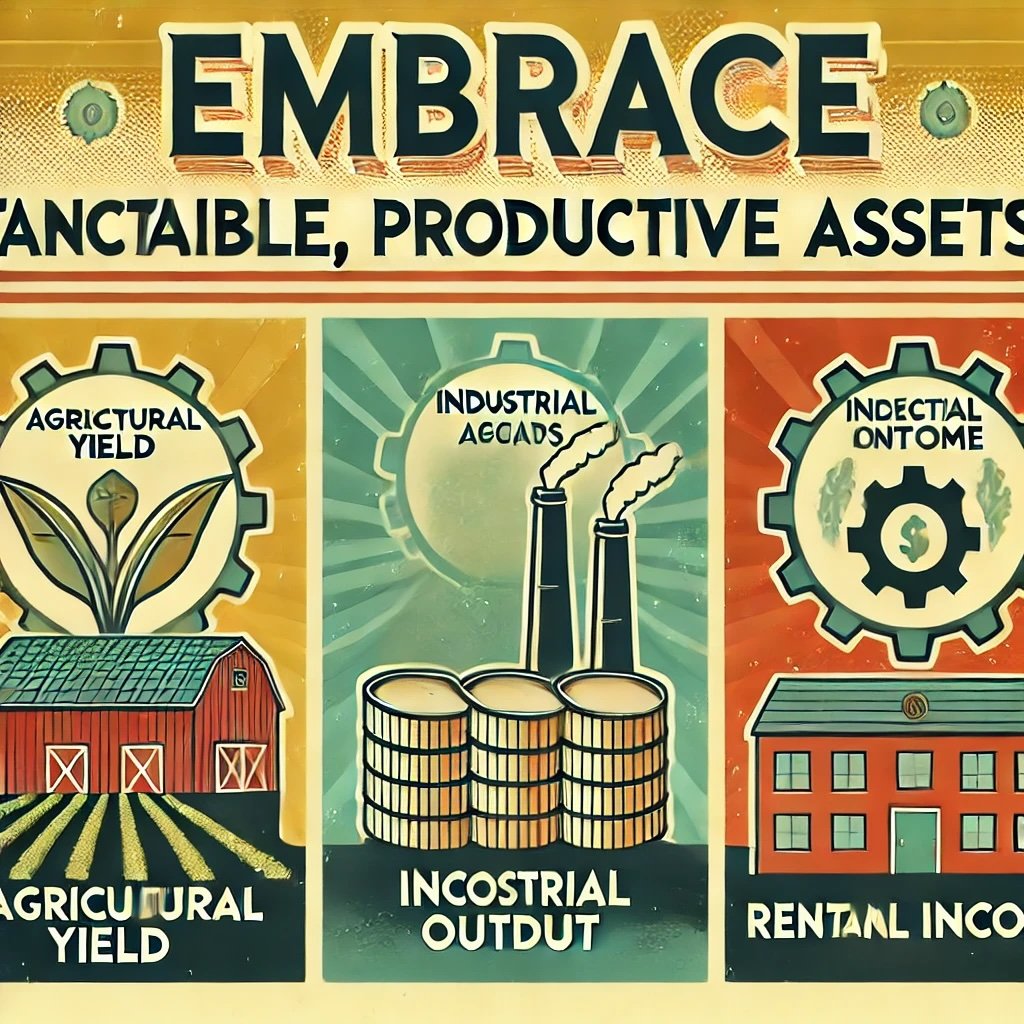
Applying Buffett’s Lessons to Your Portfolio
So, you’ve absorbed Warren Buffett’s principles for inflation-proofing your investments, and you’re now eager to put them into practice. How do you translate broad ideas about moats, pricing power, and real returns into concrete steps? This section offers a roadmap, detailing how to re-examine your current holdings, add positions that thrive under inflation, and, importantly, maintain a composure similar to Buffett’s during times of economic uncertainty.
Assess Your Current Investments
Identify Vulnerable Assets
Begin by cataloging your existing portfolio. Separate your holdings into broad categories—cash, bonds, stocks, real estate, etc. Then, consider how each might perform if inflation hits, say, 4% or 5%. Do you hold long-duration bonds locked at low interest rates? They’re prime candidates for capital erosion. Do you have savings accounts yielding close to zero? That’s also a red flag.
Real vs. Nominal Returns
Next, estimate the real returns of each asset class. If your annual bond coupon is 2% and inflation is 3%, that’s a negative real return of -1%. A quick way to make these comparisons is to subtract the inflation rate from the yield or expected annual return. Buffett never invests merely to keep pace with inflation; he aims to exceed it, so consider whether your portfolio does the same.
Build a Buffett-Inspired Inflation Hedge
Focus on Quality Equities
If you find your portfolio is bond-heavy or skewed to assets lacking inflation resilience, begin shifting toward equities with strong moats. Look for companies that have historically raised prices without losing market share—household names in consumer staples, healthcare, or essential services.
Diversify Across Industries
While Buffett famously concentrates his bets, most individual investors may need to spread risk across multiple industries. Consider consumer goods, utilities, pharmaceuticals, and perhaps some technology firms with monopoly-like positions. Diversification doesn’t mean you buy random stocks. It means you pick a handful of Buffett-like companies (quality, pricing power, low debt) in different sectors to cushion any single industry downturn.
Dividend Growth
If you’re particularly worried about inflation eroding your cash flow, target companies that not only pay dividends but also have a track record of raising them. Check their dividend history over at least 10 years, noting how they performed in previous economic slowdowns or inflationary bouts. A consistent pattern of increasing dividends indicates management’s commitment to sharing profits and the firm’s ability to navigate cost pressures.
Embrace Tangible, Productive Assets
Real Estate Considerations
If you have the capital, real estate—especially in stable or growing markets—can serve as a strong inflation hedge. Properties generating rental income can see rent hikes over time, preserving and potentially increasing your real returns. Buffett himself rarely invests directly in real estate on a grand scale (beyond specialized holdings like some of Berkshire’s subsidiaries), but he acknowledges the merits of well-chosen properties.
Other Productive Assets
Think farmland, energy infrastructure, or even certain types of precious metals that also have industrial uses (like silver, if you’re comfortable with the fundamentals). Buffett might not plunge into these personally, but the principle holds: a productive asset that can generate revenue or has inherent utility tends to outpace pure speculative plays in inflationary spells.
Stay Patient and Long-Term Focused
Emotional Control
Inflation headlines can spook markets. You might see sudden drops in equity prices or shifts in bond yields. Buffett’s advice? Resist knee-jerk reactions. If you’ve done your homework and picked high-quality businesses, trust that their underlying value will outlast short-term volatility. Sometimes, a dip in market sentiment can even present a buying opportunity.
Tune Out the Noise
The financial media loves to sensationalize: “HYPERINFLATION COMING!” or “Dollar Crash Imminent!” While caution is wise, panic is not. Buffett’s strategy is to buy strong companies at fair prices and hold them, effectively ignoring the daily chatter. If inflation becomes more severe, the moats and pricing power you’ve selected will, in theory, cushion the blow.
Putting It All Together
By synthesizing these steps—assessing vulnerabilities, favoring equity markets with strong moats, diversifying into inflation-resistant sectors, and maintaining emotional poise—you can sculpt a portfolio that echoes Buffett’s inflation strategy. Of course, adapt these guidelines to your own situation. Buffett’s genius includes understanding his circle of competence and sticking to it. Don’t invest in industries you don’t understand, and don’t chase yields without verifying the underlying fundamentals.
Warren Buffett’s Guide to Inflation-Proof Investing — 12-Question FAQ
What does Warren Buffett mean when he calls inflation a “tapeworm” for businesses?
He’s highlighting how rising input costs silently eat into a company’s real earning power. Firms must reinvest more just to stand still, so investors should favor businesses that can raise prices without losing customers, keep capital needs low, and still grow real (after-inflation) earnings.
Why does Buffett generally prefer stocks over long-term bonds during inflation?
Bonds pay fixed coupons that lose purchasing power as prices rise. Equities represent productive assets whose earnings and dividends can grow, especially when the business has pricing power and a durable moat. That adaptability gives stocks a better shot at outpacing inflation over time.
What is “pricing power,” and why is it the core Buffett hedge?
Pricing power is the ability to lift prices with minimal volume loss. Iconic brands, network effects, and cost advantages create moats that let companies pass through higher costs, protecting margins and real earnings—Buffett’s favorite defense against inflation’s erosion.
How does capital intensity affect inflation resilience?
High capex businesses must constantly spend on equipment and inventory—costs that inflate. Buffett tilts to low-capital-intensity, high-margin models (think strong consumer brands) so more cash becomes owner earnings instead of maintenance spend, preserving purchasing power.
Do dividends help against inflation—or can they be a trap?
Growing dividends can offset rising living costs and signal healthy free cash flow. The trap is chasing unsustainably high yields. Buffett’s filter: prioritize coverage by durable cash flows, conservative payout ratios, and decade-long histories of raises through different cycles.
Are real assets (like real estate or farmland) “Buffett-approved” inflation hedges?
Yes—productive real assets that throw off cash yields that can reset (rents, harvests, tariffs) can track or beat inflation. Buffett’s emphasis is on cash-generating utility, not just price appreciation for its own sake.
Why is Buffett skeptical of gold and crypto as inflation hedges?
They’re non-productive: they don’t generate cash flows. Buffett prefers assets that produce goods, services, or cash and can compound. Price may rise on sentiment, but without earnings you’re relying on the next buyer rather than intrinsic value growth.
How should investors think about “real” versus “nominal” returns?
Nominal gains can flatter; real returns (after inflation) are what build wealth. Buffett focuses on businesses whose intrinsic value compounds faster than inflation, not just those posting higher dollar sales because prices rose.
Which business traits best signal Buffett-style inflation durability?
Wide moat (brand, switching costs, networks)
Pricing power with loyal demand
Low capital intensity and robust free cash flow
Conservative balance sheet (manageable debt as rates rise)
Owner-operator discipline and rational capital allocation
How can I rebalance a portfolio toward Buffett-like inflation resilience?
Trim long-duration fixed income and speculative assets; add quality equities with moats, dividend growers, and selected productive real assets. Keep a liquidity sleeve (short-term bills/cash) to buy bargains when volatility strikes.
What common inflation mistakes does Buffett avoid?
Parking excess cash at yields below inflation
Locking into long bonds with fixed, sub-inflation coupons
Overpaying for businesses without pricing power
Chasing high headline yields unsupported by free cash flow
Confusing story stocks with productive, compounding assets
What’s a simple Buffett-inspired checklist before I buy?
Can it raise prices?
Does it need heavy, inflation-sensitive capex?
Is free cash flow durable and covering dividends/buybacks?
Is the balance sheet safe as rates rise?
Am I paying a fair price for 5–10 years of compounding?
Important Information
Comprehensive Investment Disclaimer:
All content provided on this website (including but not limited to portfolio ideas, fund analyses, investment strategies, commentary on market conditions, and discussions regarding leverage) is strictly for educational, informational, and illustrative purposes only. The information does not constitute financial, investment, tax, accounting, or legal advice. Opinions, strategies, and ideas presented herein represent personal perspectives, are based on independent research and publicly available information, and do not necessarily reflect the views or official positions of any third-party organizations, institutions, or affiliates.
Investing in financial markets inherently carries substantial risks, including but not limited to market volatility, economic uncertainties, geopolitical developments, and liquidity risks. You must be fully aware that there is always the potential for partial or total loss of your principal investment. Additionally, the use of leverage or leveraged financial products significantly increases risk exposure by amplifying both potential gains and potential losses, and thus is not appropriate or advisable for all investors. Using leverage may result in losing more than your initial invested capital, incurring margin calls, experiencing substantial interest costs, or suffering severe financial distress.
Past performance indicators, including historical data, backtesting results, and hypothetical scenarios, should never be viewed as guarantees or reliable predictions of future performance. Any examples provided are purely hypothetical and intended only for illustration purposes. Performance benchmarks, such as market indexes mentioned on this site, are theoretical and are not directly investable. While diligent efforts are made to provide accurate and current information, “Picture Perfect Portfolios” does not warrant, represent, or guarantee the accuracy, completeness, or timeliness of any information provided. Errors, inaccuracies, or outdated information may exist.
Users of this website are strongly encouraged to independently verify all information, conduct comprehensive research and due diligence, and engage with qualified financial, investment, tax, or legal professionals before making any investment or financial decisions. The responsibility for making informed investment decisions rests entirely with the individual. “Picture Perfect Portfolios” explicitly disclaims all liability for any direct, indirect, incidental, special, consequential, or other losses or damages incurred, financial or otherwise, arising out of reliance upon, or use of, any content or information presented on this website.
By accessing, reading, and utilizing the content on this website, you expressly acknowledge, understand, accept, and agree to abide by these terms and conditions. Please consult the full and detailed disclaimer available elsewhere on this website for further clarification and additional important disclosures. Read the complete disclaimer here.


